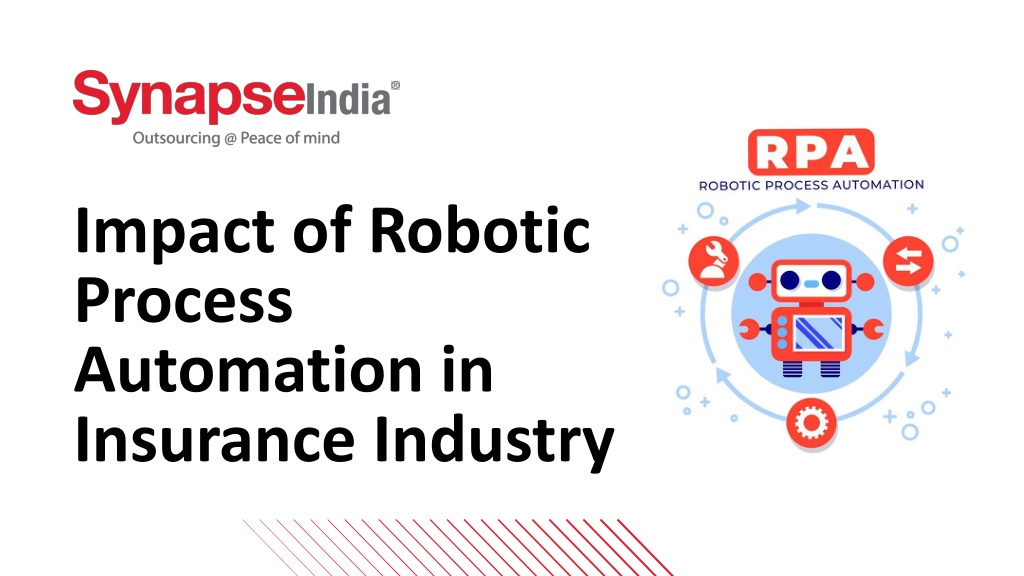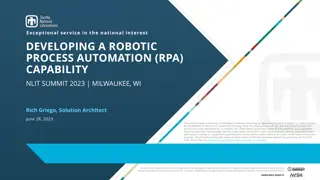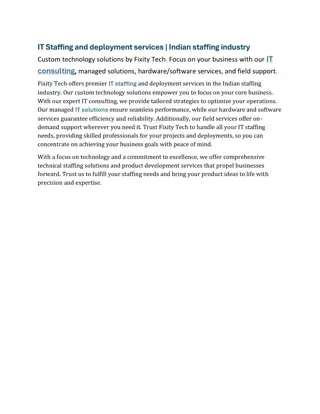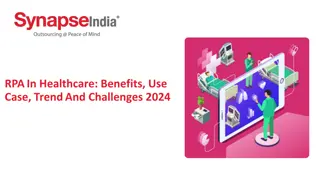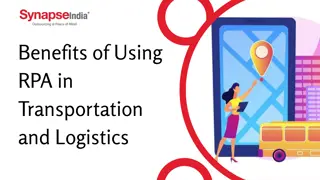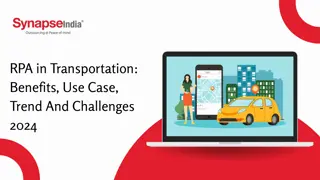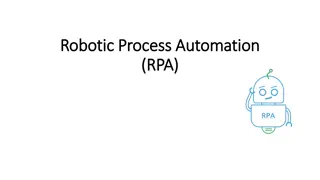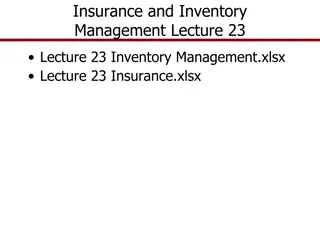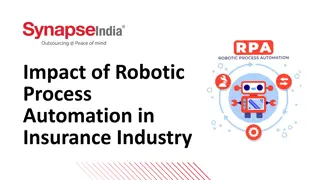Optimize Insurance Operations with Custom RPA Solutions
Implement RPA in the insurance industry to automate time-consuming tasks such as claims processing and compliance. Our custom RPA solutions streamline your workflows, reduce errors, and improve data accuracy. Partner with us to modernize your insuran
Uploaded on Sep 18, 2024 | 26 Views
Download Presentation

Please find below an Image/Link to download the presentation.
The content on the website is provided AS IS for your information and personal use only. It may not be sold, licensed, or shared on other websites without obtaining consent from the author.If you encounter any issues during the download, it is possible that the publisher has removed the file from their server.
You are allowed to download the files provided on this website for personal or commercial use, subject to the condition that they are used lawfully. All files are the property of their respective owners.
The content on the website is provided AS IS for your information and personal use only. It may not be sold, licensed, or shared on other websites without obtaining consent from the author.
E N D
Presentation Transcript
Impact of Robotic Process Automation in Insurance Industry
TABLE OF CONTENT Introduction to RPA in Insurance Key Benefits of RPA in Insurance Use Cases of RPA in Insurance Impact on Employee Productivity Challenges in Implementing RPA Future of RPA in Insurance
Introduction to RPA in Insurance RPA is the use of software bots to automate repetitive tasks. It enhances operational efficiency by reducing manual intervention. RPA In the insurance sector, streamlines processes such as data entry, claims processing, and compliance.
Key Benefits of RPA in Insurance Improved Efficiency: Automates time- consuming tasks, speeding up processes. Reduced Errors: Minimizes human errors, enhancing data accuracy. Cost Reduction: Decreases operational costs by automating repetitive tasks. Better Compliance: Ensures regulatory adherence through automated data checks.
Use Cases of RPA in Insurance Claims Processing: Automates the end-to-end claims lifecycle, reducing processing time. Policy Administration: Streamlines policy renewals and updates with minimal human input. Customer Service: Bots handle inquiries, improving response time and customer satisfaction. Fraud Detection: Analyzes large datasets to identify patterns and flag suspicious activities.
How RPA Transforms the Workforce Focus on Higher-Value Tasks: Employees can shift focus to strategic roles, such as customer relations. Increased Job Satisfaction: Eliminating mundane tasks boosts employee morale and engagement. Collaboration with RPA: Bots and humans work together to drive productivity.
Challenges in Implementing RPA Initial Investment: High upfront costs for technology setup. Employee Resistance: Fear of job displacement or changes in roles. Complexity of Integration: Integrating RPA with legacy systems can be challenging. Ongoing Maintenance: Bots require continuous updates to adapt to evolving processes.
Future of RPA in Insurance AI Integration: Combining RPA with AI for smarter automation, such as predictive analytics for underwriting. Scalability: More processes across insurance companies will adopt automation. Enhanced Customer Experience: Faster, more accurate service will be a priority for customer retention. Data-Driven Decision Making: RPA will aid in extracting insights from large volumes of insurance data.
Conclusion The insurance industry is undergoing a digital transformation, with RPA at its core. Early adoption of RPA can lead to better efficiency, lower costs, and improved customer service.
Contact Us rpa.synapseindia.com info@synapseindia.com +18557962773
